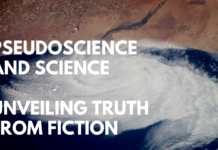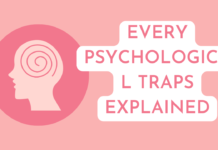Exploring the Divide: Pseudoscience and Science – Unveiling Truth from Fiction
when we’re trying to understand things, we have two different roads we can take. One road is called science. It’s like a bright path that helps us figure out how things work using facts and careful thinking. The other road is called pseudoscience. It’s like a dark, confusing path that might lead us the wrong way because it doesn’t rely on real evidence.
Science is like a flashlight that helps us see in the dark. It uses experiments and looking really closely at things to find out the truth about them. It’s all about figuring out the real facts and how things really are.
But then there’s pseudoscience, which is like a tricky shadow that tries to look like science, but it’s not the real deal. It might sound convincing, but if you shine a light on it, you’ll see that it’s not based on real evidence or careful thinking.
So, in this journey, we’re going to explore both science and pseudoscience. We want to understand the difference between what’s true and what’s not. Together, we’ll learn how to spot the real facts and avoid getting tricked by things that aren’t true. Let’s dive in and see what we can discover!
| Pseudoscience | Science |
|---|---|
| Lacks Empirical Basis: Pseudoscience often lacks empirical evidence or relies on anecdotal evidence, testimonials, or personal experiences rather than rigorous scientific methods. | Empirical Basis: Science relies on empirical evidence obtained through systematic observation, experimentation, and measurement. It seeks to understand natural phenomena through evidence-based reasoning. |
| Absence of Methodology: Pseudoscientific claims often lack a systematic methodology for testing hypotheses and rely on intuition, speculation, or unverified assertions. | Methodology: Scientific inquiry follows the scientific method, which involves formulating hypotheses, conducting experiments, analyzing data, and drawing conclusions based on evidence. |
| Lack of Peer Review: Pseudoscientific claims may not undergo rigorous peer review by experts in the field, leading to a lack of scrutiny and validation. | Peer Review: Scientific findings are subject to peer review, where other experts in the field evaluate the research methods, data, and conclusions before publication. |
| Unfalsifiability: Pseudoscientific claims may be unfalsifiable, meaning they cannot be tested or disproven through empirical means. | Falsifiability: Scientific hypotheses and theories must be testable and potentially falsifiable. This means that they can be subjected to experiments or observations that could prove them wrong. |
| Resistance to Revision: Pseudoscientific beliefs may persist despite contradictory evidence or lack of empirical support, often due to ideological or cultural factors. | Building: Scientific knowledge evolves through consensus building among researchers based on the accumulation of evidence and rigorous testing of hypotheses. |
| Limited Predictive Power: Pseudoscientific claims typically lack the predictive power and explanatory coherence of scientifically supported theories. | Predictive Power: Science aims to develop theories and models that can make accurate predictions about future observations or experiments. |










